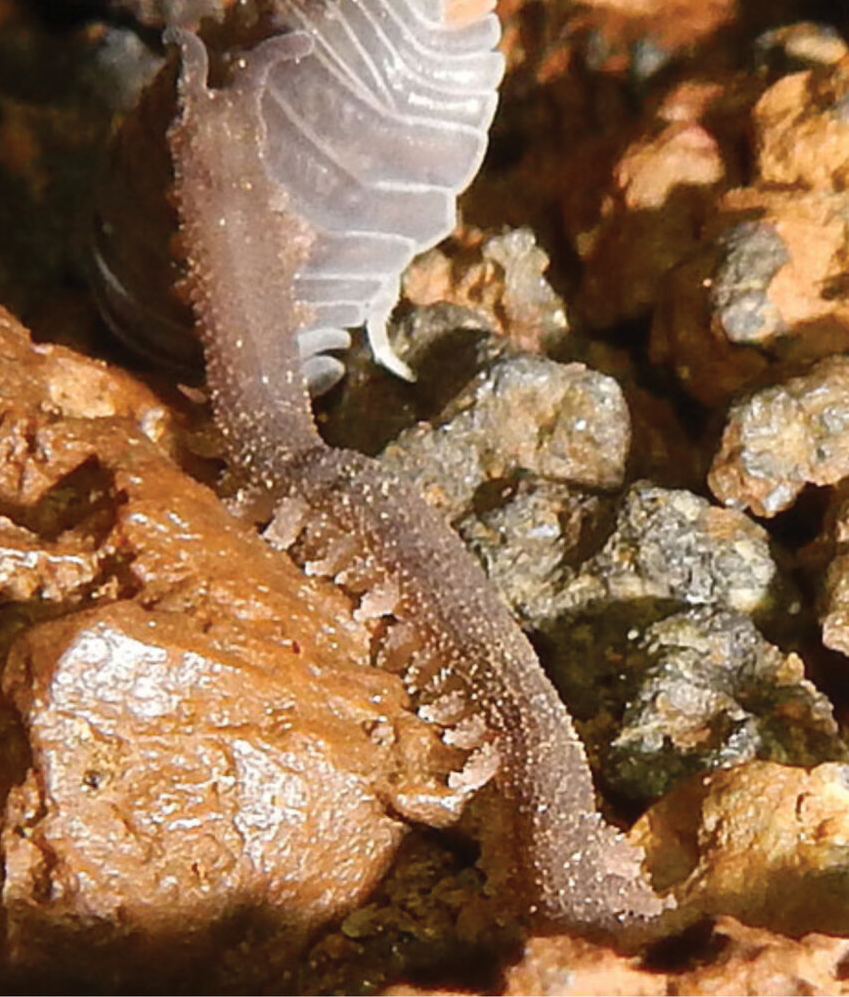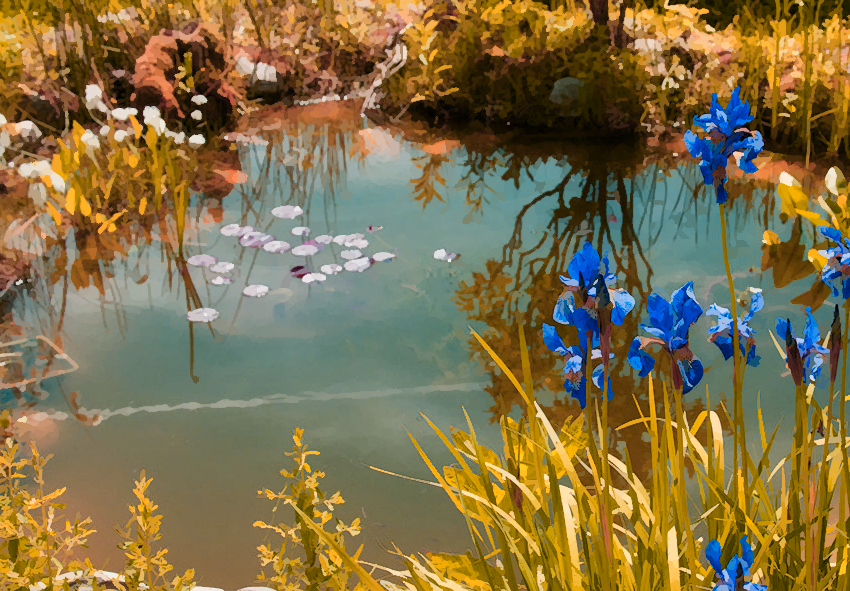
Pictured Above: A Damworm in it's Finder stage looks for a new home in a corralum tube.
Damworms are a family of invertebrates that can grow large enough to form their own ecosystems. A cousin to Corralum, these creatures start life as a pupae spawned off their parent pool. This is called the 'Finder' phase.
These pupae, no larger than a finger, will float and crawl until they find a source of running water. Once they find a source, they will plant themselves, anchoring into the soil or rock and beginning the next stage of their life cycle. They will develop several rigid sets of butterfly wing-like apparatus that collect water into a growing pool on the creatures 'back'. This phase is called the "Seedling" phase, and typically lasts a year.
If the Damworm is successful enough in this phase, it will begin its third stage, where the wings harden faster and spread further. The Damworm can only enter this phase if it has created a large enough pool of water to form a miniature microenvironment. During this stage, called "Teething", the Damworm forms pseudopods and mouth-like structures that are used to control and protect its private ecosystem.
The Damworm continues to grow wider and wider, until entire ponds form on them at which point it can enter the final "Osmosis" phase, where the worm will begin to split into multiple 'districts' which causes the expulsion of more Finders.
Multiple Centuries
The Millenia Reservoir (1847 Years)
The Millenia Reservoir (1.5 Km)














This is great, but the link in your notification is busted. I had to search to find this! I love the thought you've put into this, not only how it's part of the natural ecosystem, but how your sophonts would cultivate them.
Learn about the World of Wizard's Peak. Visit my Worldember 2025 Hub as I work on 50,000 words in December!
No wonder why I've had no likes on it.... I'm glad you let me know! And I'm glad you like the content too!
Wanna see some good articles? Of course you do.
Showcase